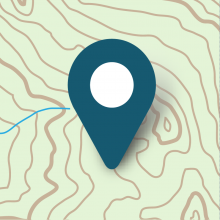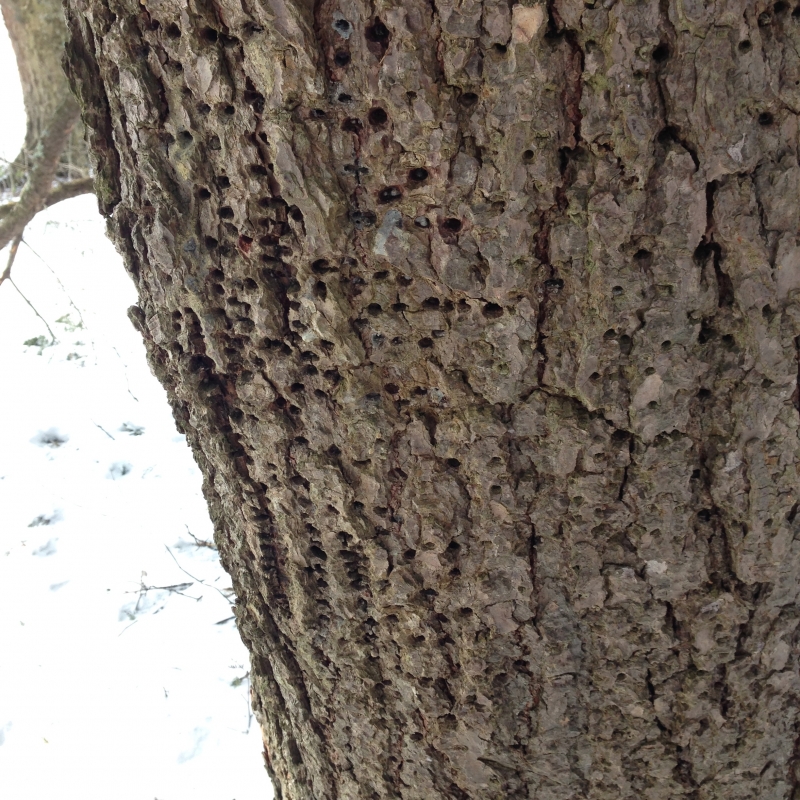
North Country explorer from Pittsford, NY
This is a close up photo of a tree. While I didn't note the certain species of tree when the photo was taken, combined with the fact that I am not particularly knowledge about tree ID via bark types, it is probable that this is a species of the maple tree (due to the fact that it was taken at our 'Sugaring' lab). The trees are located in the woods on the Extension's acres. The holes in the bark are the remains of tree taps, plugs that are placed in a tree after a small hole is drilled in order to drain sap from the bark of the tree. This sap, transported in the phloem cells of a tree, is the main ingredient used in the production of maple syrup. The Cornell Cooperative Extension has hundreds of lines connected to the taps in their woods that allow the sap to flow (via gravity) so it can be collected by the farmers easier. The sap is then taken to the "sugar house" where it is boiled down and purified -- additives may be included to adjust the taste and/or sweetness. Fun fact: it takes roughly 40 gallons of water to make 1 gallon of maple syrup. What I find most interesting about this photo is the number of taps this tree has seen. The large number of holes indicates that this individual tree has been tapped many times -- perhaps it is on its last leg in the sap-tapping game.

